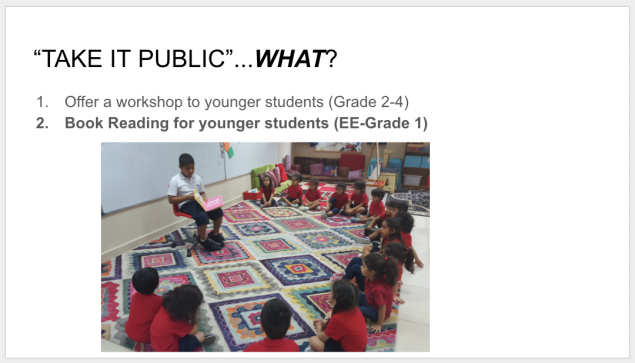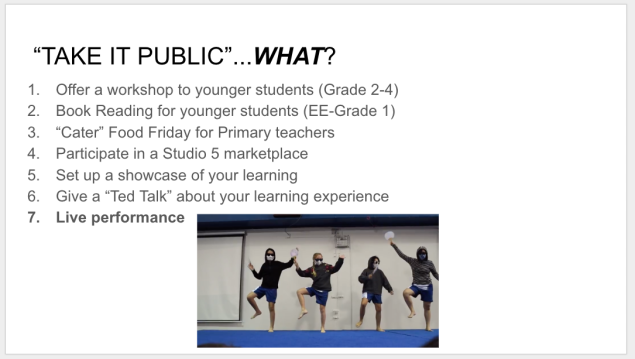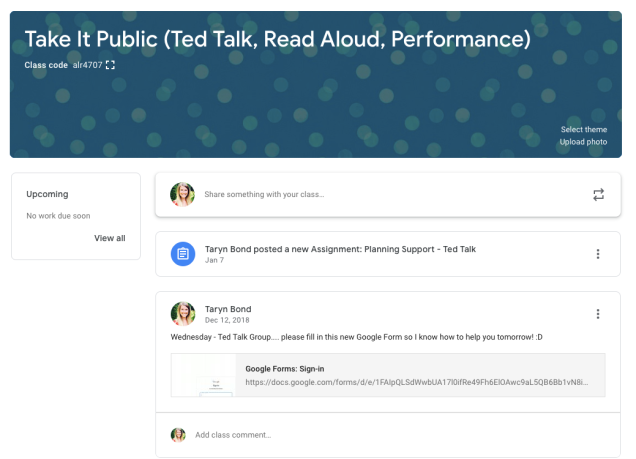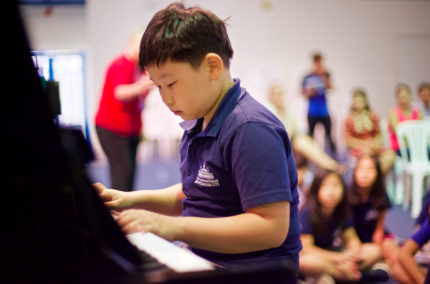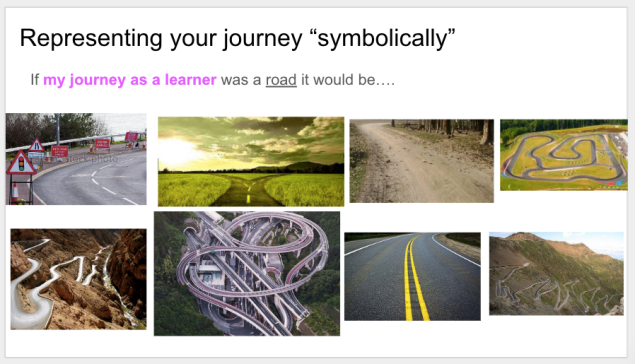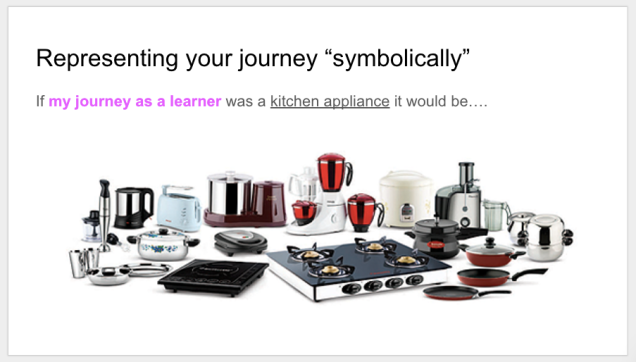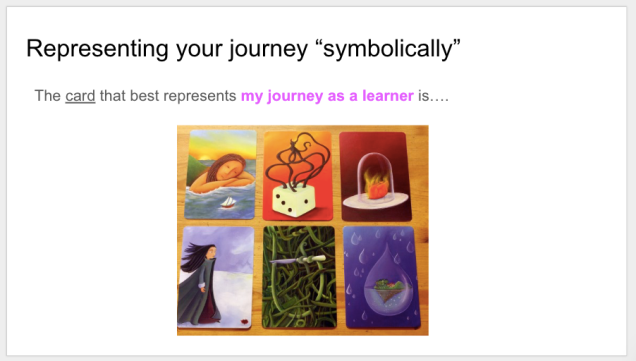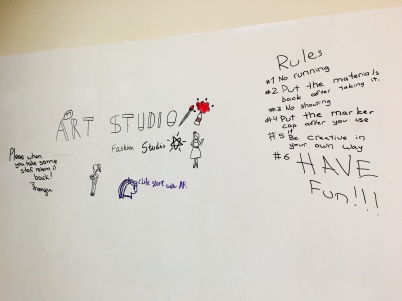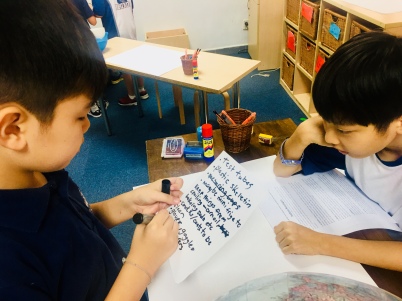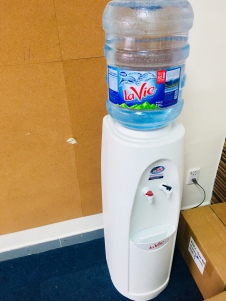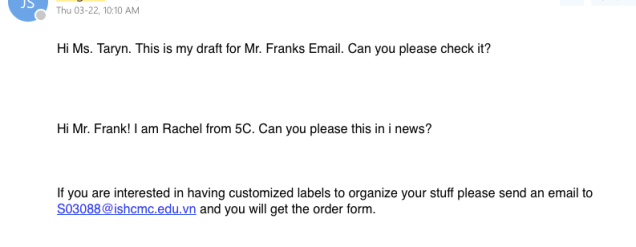We have 120 Grade 5 students.
We have 10 learning spaces in our Grade 5 hallway.
And to start the year we believed that those 120 students should have the trust and ownership to collectively design and set-up those 10 learning spaces.
So they did. And it was pretty amazing.
Before Day 1
As usual, our team started with why. With the help of our PYPC and instructional coaches, we talked as a team to ensure we were all on the same page about why having students set-up their learning spaces was essential to starting a year full of respect and support for their agency. From there we were able to move onto possible hows and whats , but we knew that most of the planning would be in response to what actually happened each day, so we started small, with one first step – “unsetting up” the space.

We knew that in order for students to be able to truly own the space, we would need to provide them with a blank canvas – essentially undoing any thinking, decisions or organization from us. We also knew it was important that students could easily see and access all the furniture, resources and materials that we had as a grade level, so we decided to collate it all into separate areas. We put all the tables in one area, all the couches in another area, all the shelves in another area, all the baskets/bins/organizers in another area, all the consumable materials in another area and all the learning resources and manipulative in another area. We also ensured every wall, shelf, cupboard, and bin was completely empty.




We also knew that is was essential to keep parents informed and involved. So we sent them this email a few days before their child’s first day of school:
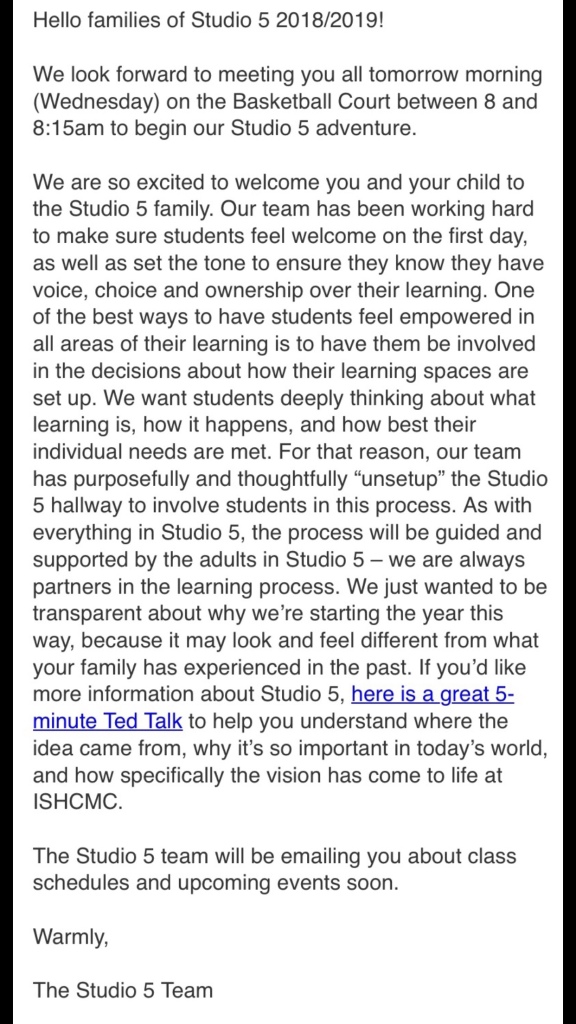
Day 1
On day 1, we pretty much just said “Go! Set-up your studios!”. We wanted to prevent too much guidance and ensure our thinking wasn’t accidentally seeping into their thinking. We also wanted to use this as a cold diagnostic – to see who they are and what they currently think and understand about learning and school. Since there were lots of big, heavy pieces of furniture we did have a safety briefing to talk about how to lift and carry furniture and how to ask for help when needed.
Then they were off…
And it was incredible to see the action, initiative, thinking and teamwork right out of the gate!

Immediately we started to see creativity and great ideas:

A table for adults to drop of forgotten lunches….

An indoor handball court…

A welcome sign…
We also started to see different types of learning spaces emerge:
And by the end of day 1, students had successfully set-up 7…. classrooms.

Day 2
Although students did an AMAZING job with their first attempt of setting-up, it was clear that many of them were still in the mindset of “doing school” – a paradigm we knew we wanted to challenge immediately. So in small advisory groups we all facilitated a guided brainstorm activity to get them thinking about the concept of a studio.




Once we helped students organize and unpack their own thinking about the concept of a studio, we asked them a challenging question.
“Yesterday we told you to go set-up your studios. Looking at the people, places, materials, and purposes from your brainstorms this morning…. did you actually set-up ‘studios’?” – Us
“No….” – Them
“Yesterday, what did you set-up?” – Us
“Classrooms” – Them
“Do you guys want some more time to try again?” – Us
“YAASSSSSS!!!!!” – Them

So they tried again. And it was just as – if not more – amazing! We started to see spaces emerge that would support authentic and purposeful pursuits and endeavours.




But we noticed students weren’t really considering the purpose-built spaces. We have two small rooms with doors, one large room with doors, 4 medium rooms with 3 and 3/4 walls and two large open spaces. Yet students weren’t matching the purpose of the space to the unique features of the space. So we broke into small advisory groups again to push their thinking further. We analyzed the features of each space and debated what type of studio would be most appropriate in that space. Obviously there was no clear right or wrong answer, so we ended up with several, equally good options.
Day 3
We took the most popular options that arose from discussions within advisory groups and synthesized them into 3 main floor plans. Then students and advisors analyzed the floor plans and cast their vote.

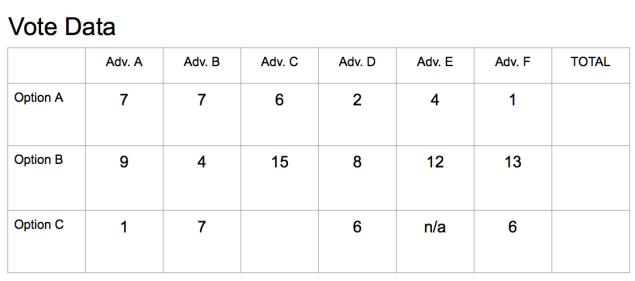
It was clear that “option B” had the majority of votes, so that is what we went with.

Next, we had students commit to a team that they felt motivated to help with.


Then we let them go again to bring “option B” to life in their new teams.



We started to see the space take shape, but noticed they were focused mostly on the big things and not yet thinking about the smaller details. So we pulled them together and provoked their thinking further with these 6 questions.

Then we really started to see the spaces take shape.
We saw more thinking and action connected to organization…
We saw more attention to aesthetics…
We started to see signs and instructions…
We saw more thought into what was needed in each space and how to get it…
Day 4
Since all the spaces will be used be all 130 of us, it was important that the teams responsible for each space were considering and using the ideas and opinions of people who were not on their team. So we gave students the opportunity to “tour” each space and then leave feedback for the group responsible for designing that specific studio.


Then teams had time to analyze the feedback and decided how they were going to take action to honour the ideas and concerns of their peers.

Day 5
At this point spaces were starting to shape up, but we noticed that most students (with an exception of a few) weren’t looking beyond what they already had in their space. So we poked their thinking further into what else they might need, where they could get it and, of course, how we as adults could support them in that process.

Day 6,7,8
At this point in the process, we noticed a plateau. It seems that students took themselves as far as they could and weren’t sure where to go next. So that was a big clue for us, that it was time to jump in and help them go beyond where they could take themselves. So we had one adult join each of the teams and act as a coach. Each person had their own style of how they supported their group, but we all shared the common theme of helping support students’ thinking and organization towards their next steps.



We noticed that this support helped students go further and begin to think about the smaller details within their space.






Even MORE cool ideas began to emerge!









Day 9
Then, finally, the spaces were “done” (knowing that there is always opportunities for reflections, refinements, new ideas and changes throughout the year!)
We ended up with a book nook…

An art and design studio…

A recording studio…

A science and maths lab…

A town hall space…

A drama studio…

A fitness studio…

A digital production studio…

And a “chillax” studio…

At this point it was important to take time to pause and reflect in order to look for learning. We challenged the students to think about the last 9 days and notice and name the attributes of the IB Learner Profile, PYP attitudes, ATL skills, strands of math and stands of language that have been embedded within their experience designing and setting-up their learning spaces – even if they didn’t realize it at the time.


We then displayed their reflections for the community – to help parents, other grade-levels and visitors to our school understand where the learning has been during the first two weeks of the year.


Day 10
Now that the studios were fully set-up it was time for all of us to explore and use the amazing spaces!







It was also time to show and share the spaces with their families. So during Back to School Night, students gave their families a tour of all the learning spaces in our hallway. We invited parents to leave their feedback so we could include their voice in the process.
Here is what they had to say:





Reflections
- It was such an enjoyable first few weeks of school
- It provided great diagnostic data about our students’ thinking, initiative, teamwork, problem solving and creativity
- It established a really strong sense of community
- It set the tone for a culture of initiative, not a culture of permission
- It helped students understand the spaces, resources and materials they have available to them this year
- It challenged us all to break down our “homeroom” mentality
- It showed students we are serious about respecting and supporting their agency as learners and as a people
I feel extremely lucky to be part of a team of fellow risk-takers who were all on board to jump in with both feet. I also feel extremely lucky to be at a school with a parent community who trusted us and tried their best to understand our approach and how they could be part of it. I also also feel extremely fortunate to be at a school where our leadership, admin and even Head of School not only understood what we were trying to do, but supported us and even publically shared and celebrated our approach.

If you want to involve your students in setting up their learning spaces, but happen to be at a school where your team, leadership, admin and/or Head of School are not on board (yet), take comfort in the fact that the Enhanced PYP has your back!

How do you involve your students in setting up their learning spaces?






